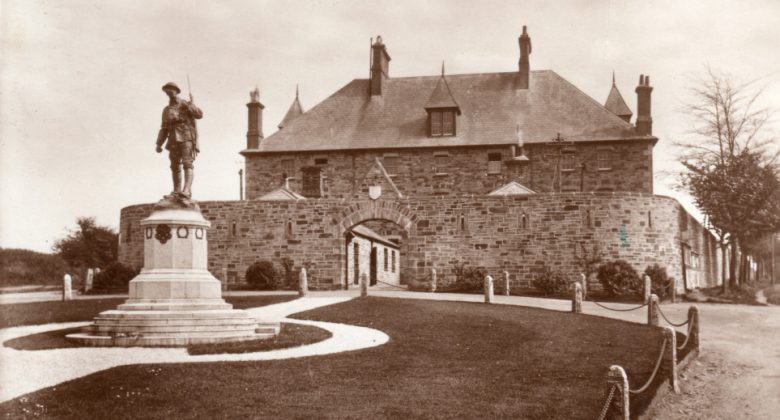The history of the regiment goes back to 1702, but the military history of the site starts in 1859. The Keep was built as a reaction to Napoleonic threats and although the architecture of the building is based on a French chateau this it would appear to be coincidence and a designed decision based on fashion tastes at the time rather than anything to do with the situation with France.
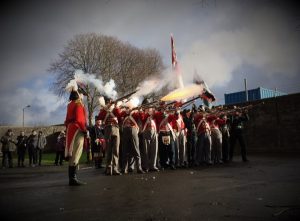
The Keep originally housed the depot (stores) of the Royal Cornwall Militia, which was the volunteer force of the period. In 1874 it was decided that the site would become the depot for the 32nd and 46th of Foot regiments and the barracks behind The Keep, named Victoria Barracks, were constructed between 1874 and 1878 to provide suitable living quarters for the soldiers and officers.
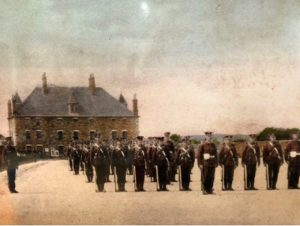
Victoria Barracks was designed to a ground-breaking new standard to which provided healthier and more hygienic living conditions for the soldiers. Standards of sanitation in the barracks of London and other large cities were poor, causing ill-health and sometimes death among servicemen. The Victoria Barracks at Bodmin included a central cook house on the site, with trained cooks to create meals for the servicemen. There were dedicated buildings for soldiers’ relaxation and recreation and married quarters with their own washing and cooking facilities and a fresh water supply. Today there is a fascinating exhibition in the museum where you can learn more about the History of the Barracks. There was also a separate hospital and mortuary.
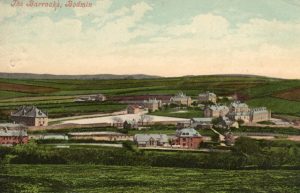
Formation of the Duke of Cornwall’s Light Infantry
In 1881, the two Regiments, the 32nd of Foot (Cornwall) and the 46th of Foot (South Devonshire), along with the Royal Cornwall Rangers Militia were amalgamated to form the 3 battalions of the Duke of Cornwall’s Light Infantry (DCLI). This created more building work to meet the needs of this new larger regiment.
The Great War
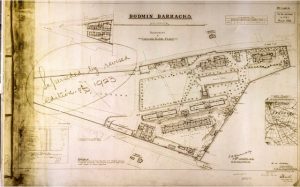
During World War I the barracks become a brief home to some 2000 soldiers, when they were used as a training base. Each new recruit would have undertaken between 3 and 6 months training before being sent to war. These soldiers, even though initially recruited and trained with the DCLI, were frequently re-enlisted with a different regiment on leaving the Barracks, depending on which regiments needed new men.
The War Memorial
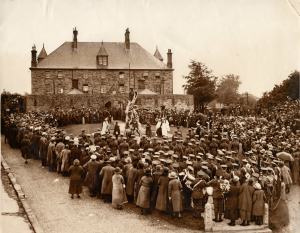
Shortly after the end of The Great War, regiments throughout Great Britain decided that it would be appropriate to remember the huge numbers of men that had lost their lives during the terrible conflict.
Stanhope Forbes, the distinguished Newlyn School painter, suggested L.S. Merrifield of Chelsea to design a tribute to the fallen to stand proudly outside the Bodmin Barracks. The model for the statue was William Triggs who served with the DCLI and was well-known to Stanhope Forbes having modelled for his paintings on many occasions. The memorial was unveiled by HRH the Prince of Wales (later King Edward VIII) on Thursday 17th July 1924 as a testament to the bravery and sacrifice of the men of the DCLI.
Post World War I
Throughout the 1930’s, the depot and barracks continued to be used by the regiment. With the prospect of another war on the horizon, the DCLI was increased in size ready to be mobilised for the outbreak of WWII. In the late 1930’s the barracks was developed further to meet the needs of this larger regiment, including the introduction of bunk beds for sleeping and adaptations to the quartermasters store so it could kit out more soldiers more quickly.

Walker Lines – The US Army Camp
During the early part of World War Two, Victoria Barracks continued to be used by the regiment. Then, in 1940, a new and much larger area of land adjoining the south east wall of the Barracks was developed into an independent hutted camp to house troops training for the invasion of Europe. This new camp was named ‘Walker Lines’, after the Colonel of the DCLI during 1924 – 1932, Lt Gen Sir Harold Walker.
Initially British Troops used the camp but in May 1943 the site was handed over to the 115th Infantry Regiment of the 29th Division of the US Army and Bodmin became a short-term home for many American GI’s before they embarked for D-Day and the attacks on Omaha Beach.
Interestingly, Walker Lines was designed to look ‘less regimented’ and many of the buildings were scattered haphazardly across the large site. The purpose of this was to reduce the likelihood of detection by air reconnaissance and so less obvious as a target for an enemy attack.
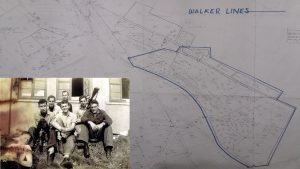
The US Army remained at Victoria Barracks until 1944, using the site as a training centre for their soldiers before they were sent off to their own regiments out in the field. After 1944 the site returned to operating as a basic Training Centre and it wasn’t until 1949 that Victoria Barracks was re-opened and once again became the home of the Duke of Cornwall’s Light Infantry (DCLI).
National Service
With the introduction of National Service in the late 1950s, the barracks was once again lively with the sound of new recruits; just like their WWI counterparts, soldiers would come to do their basic training before taking up their position in different regiments.
In 1948 Walker Lines briefly became the site of the Army School of Education, and then in 1951, with the impact of the Cold War, a greater number of interpreters and intelligence officers were needed, so the camp took on a new role as a training centre for these purposes.
The Joint Services School for Linguists
The Joint Services School for Linguists (JSSL) was opened at Walker Lines in 1951. Its purpose was to prepare intelligence officers and spies for the Cold War by teaching an intensive Russian Language course. The school remained at Bodmin until 1956, when it amalgamated with two other JSSL schools.
The Barracks Closes
In 1959 the Duke of Cornwall’s Light Infantry merged with the Somerset Light Infantry to become the Somerset and Cornwall Light Infantry. And in 1968 with the regiment disbanded completely there was no further working role for the Barracks.
So, with the closure of the barracks, the land and buildings were sold off; the officers mess is now the Environmental Agency building, and the soldiers’ accommodation has been transformed into desirable houses. The old Parade Ground is also now home to a new housing development. The Keep is now the only part of the site still owned by the Ministry of Defence and houses the museum and the Rifles Regiment Office for Cornwall.
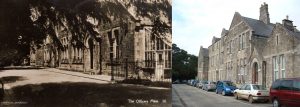
The Barracks Room
Today there is a fascinating exhibition in the museum where you can learn more about the History of the Barracks.
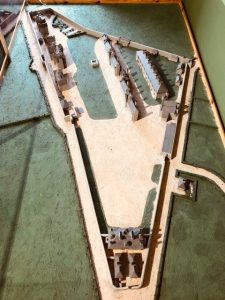
What’s next for Bodmin Keep?
Read more about the future of the museum here


